Cape to Cairo Journey:
Pages to Explore:
Blog Catagories:
Photo of the day








Home | About Us | Safaris & Photographic Trips | Blog | Contact Us | Sitemap | Disclaimer
The Essence of the Journey!
We would like to do this trip to experience new cultures.
We would like to understand what makes African people pure.
What are their spiritual beliefs, understandings?
How does the spiritual world we know exist to them?
What can we learn from them?

Aug 25 12
Kakamega, Nkuru & Rhinos in Kenya
The best example of equatorial rainforest in Kenya.   120$ allowed our family to camp one night in the forest.  It seemed like the rest of East Africa, the trend of high fees in the National Parks was going to continue.  Birding in the forest was frustrating.  The birds have such beautiful calls and one can hear them clearly but seeing them is tough, however we were able to have good sightings of Banded & Chestnut Wattle Eye.  The trees do not quite
reach the heights of Kabale, but are still spectacular.  The forest is under extreme pressure from the local population and this is evident with 17 communities living inside the forest.
The following morning, we were up at 04h30 in search of de Brazas monkey.  This population of threatened Central African primate is extremely rare and the northern Kakamega population is 32 strong or should I say weak?  In order to have a chance of seeing this monkey, one needs to travel 8 kilometres to the northern section of Kakamega forest before sunrise.  They feed along the fringes of the forest, where locals throw stones at them and chase them away with their dogs in fear that they will raid their crops.
Danica has taken a passion to primates on this trip and it was her keen interest that was the tipping point on us going on this search for de Braza’s.  Instead of walking through pristine primary forest, notching up a few new bird species in the process, we found ourselves walking through muddy mielie fields.  Having driven the 8 km, we parked alongside a subsistence farmer’s field and walked off towards the forest.  We then walked along a river, looking into the mid and upper canopy of the forest, our eyes piercing the shadows in search of primates.
We saw a primate shadow, but in a flash, it was gone.  These monkeys have become excessively shy thanks to the pressures exerted on them by humans.  This was to be our only sighting of de Braza’s, unconfirmed and unsatisfying.  We had sightings of Red-tailed monkey shortly thereafter as well as Verreaux’s Eagle Owl, White Chinned Prinia, oh, and a waterfall.  With each walk at a premium, the family was disappointed.
We met an enchanting Spanish couple at Kakamega.  Borja was a keen photographer and we chatted and identified some of the birds he had seen on his trip in Kenya, as well as about the European Economy.  They were pessimistic about Spain’s future and said that the unemployment rate in their age group of 20-30 was close to 50%.  Although they live in Madrid, they do not avidly support the Spanish Champions.  In the evening we had a drawn out Equatorial storm which lasted a few hours.  This turned out to be a good thing as we got to learn that Borja, besides looking after endangered Lammergeier’s in Spain, is also a part-time magician.  This kept Nicolai & Danica enthralled way past their bed time.  And as a direct result, we are now exposed to the occasional simulation of trickery by Nicolai.  Sharing a meal with Borja and Montse was a pleasure, fantastic people.
Lake Nkuru National Park
We arrived at Nkuru town late.  There had been road works aplenty on the B3 with many detours.  Being 21h00 and too late for access into the national park, we overnighted at the Merica Hotel.  Over-rated, over-priced and full of tourists from the Far East, it was not our style.
There had been a lot of rain in Kenya in the last week, some of which we witnessed personally at Kakamega and now at Lake Nkuru, we saw her bulging at the rims as a result.¬† Delightful waterbirds greeted us along the lake shore close to the gate.¬† Great White and Pink-backed Pelicans, Spoonbill, Great White and Little¬†Egrets, Yellow-billed Storks stalled our passage to the Kenya Wildlife Society Campsite.¬† The lake was so full that the roads were threatened with its over-flowing.¬† Buffalos did not mind the ‘mush’ and occur at Lake Nkuru in large numbers.¬†
Arriving at our overnight spot, I moved Staffie and the trailer into position ‚Äď Thwack ‚Äď the sound of crunching timber, followed by a slump as the front wheel gave way.¬† Grass had grown over some rotten wood that was concealing an un-marked French drain, shit.¬† The chassis of the vehicle had bottomed out to one side as there was 4m separating earth and the right front wheel.¬† Now what?
Unhitch the trailer?  How do I bridge the gap?  I went over to call Martin, the attendant at the camp.  He went in search of materials and brought back Mojito the camp manager.  He then went off and brought some planks that were about about 12mm thick.  They were not going to work and I looked around and noticed that the camp had a good fence around it, made of split-poles.  I asked if there were any spare poles.  Martin went off and returned with one, it was long enough, but we needed another one at least.  A thicker plank arrived (about 40mm) it may just be sufficient.
I got the high-lift jack going, using the jacking point on the ARB bumper, the plan was to lift the vehicle up sufficient to bridge the gap with said materials. 10, 20, 30 cm the planks were shoved under the front wheel.¬† Staffie was lifting, but the angle of the high-lift jack was increasingly oblique.¬† The front right wheel was lifting off the ground.¬† Then there was a slide and another crunching sound of broken timber, Staffie had slid about 8 cm across the hole, further away from the side.¬† Our 40mm thick plank disappeared into the chasm of human excrement, broken and never to be used again.¬† Our hope now lay in the solitary split pole and other broken bits of timber.¬† Lift, slide repeat ‚Äď 15cm.¬† Lift, slide, repeat – another 15cm. repeat, repeat, repeat.¬† The edge was approaching the left front wheel, we had moved the vehicle over half a metre, but the edge of the excavated drain was crumbling.¬† At the 6th attempt, we wedged the split pole in a way that resistance was curtailed.¬† In low-range and a skid and screech, Staffie jerked over the gorge.
Our afternoon drive was incredible.  A rhino calf, just close to a month old.  Mom was grazing close by and wow, what a privilege.  This female had the longest, most beautiful horns I had ever seen.  We spent a long time looking, staring, at this beautiful sight.  Mother and calf, it belonged and fit so perfectly on this African plain.  If only ….
Black Rhino also occur at Lake Nkuru.  We searched, but at 250$/day for our family at this park, 24 hours was not enough to see these rare animals.
¬†We were out of our camp before day break the following day.¬† Within minutes on the savannah, within 500m from our camp were 2 lions.¬† Not far from them a fully grown male buffalo ‚Äď alone.¬† We had hardly come to a standstill when the male buffalo started running, sprinting in earnest, directly at the male lion.¬† The male lion was
not hanging around, and he started running away, female in oestrus or not, he charged accross and away from us, buffalo in tow.¬† The female lioness stood her ground, watching almost with an amused look on her face, unconcerned.¬† A few hundred metres, lion and buffalo disappeared from sight.¬† There was another vehicle that approached us – ‚Ķ‚Ķ We chatted, both parties excited with what we had just witnessed.¬† In the distance vervets were shouting out an alarm call.¬† This was the cue for teacher and part-time photographer, to move off, announcing, ‚Äú I‚Äôve seen leopard there before.‚ÄĚ
The male lion returned approaching slowly, keeping a watchful eye out for angry Mr. Buff.  50m stop look-around.  With lioness having slumped on the ground and nodding off, she too was not easily spotted through this metre high hyperhenia .  They seemed pleased to be back together, with lioness almost purring as she wrapped her tail around her suitor, luring him away for the days mating activities.  We had noticed a carcass nearby. They had eaten well the night before. This was a lion pair in its prime.
Lake Nkuru NP is all that it promises and more.  Situated on the outskirts of the town of Nkuru, this popular park is a gem.  I spoke to the warden, Joseph Dadacha about the Rhino Rescue Project.  He was intrigued and hugely supportive of the treatment.  This fantastic park may soon have their fantastic rhinos protected even further with the RRP.




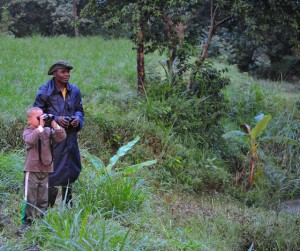
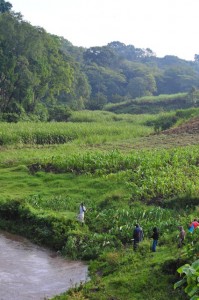
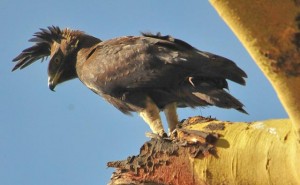
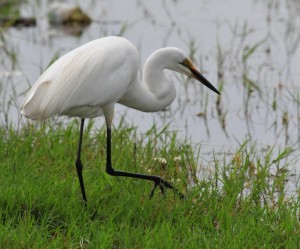
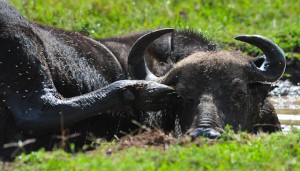
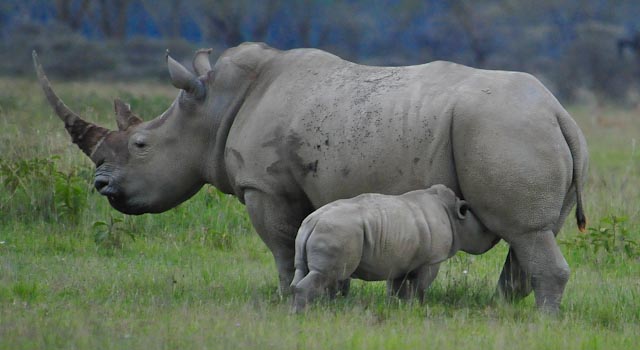
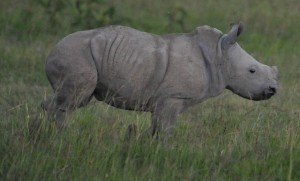

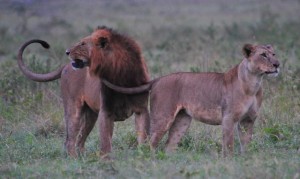
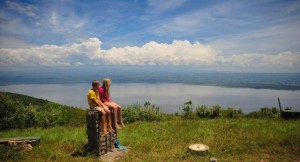
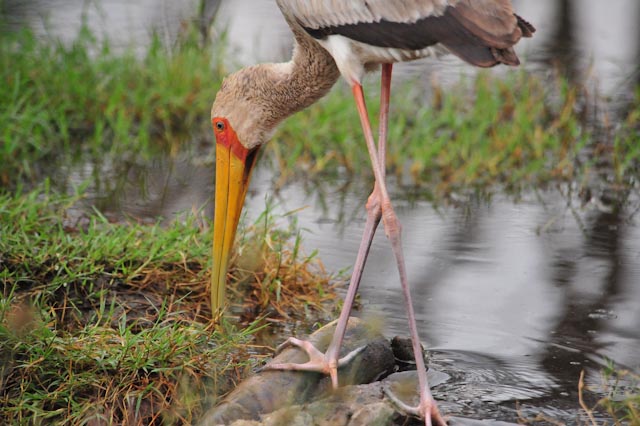


Wow, i just see Rambo in every other story. well done on getting the trailer going again. fyi, the offer still stands for u to join us here at $30 p night camping
Reading your adventures I’d be there in a heartbeat if I could only arrange the logistics. Do you know someone who knows what they are doing in the logistics business? Can’t believe how big Julien & Jorja are looking. Good to see how happy you guys are in your pics – enjoy every minute…
The adventure continues! Great pictures. It has just gone from winter to mid summer down here.
Thanks Roger, enjoy spring …
Howzit boet! See you are making a plan again! I can’t believe the quality of the pics even on my blackberry. Amazing vegetation looks so green in stark contrast to the dry highveld, just waiting for the first spring rains to change that. All the best for now.
Hi Collin, how is G5 working out? Time for some sunrise golf it sounds like? Love to the familia
Thanks Colin, it takes lots of discipline. I hope it makes a smalll difference out there somewhere …
Hi All
Back from my own adventures again this time to Namibia. Not quite as interesting as yours I must admit, but certainly one of my best countries of all time.
I can see you making goo dprogress through East & Central Africa. As you mentioned I find this area particularly expensive to us SA tourists, no matter where you go. Uganda seemed like a highlight and is on my Travel Bucket List.
Awaiting your next updates.
Mike
Hi All
Back from my own adventures again this time to Namibia. Not quite as interesting as yours I must admit, but certainly one of my best countries of all time.
I can see you making good progress through East & Central Africa. As you mentioned I find this area particularly expensive to us SA tourists, no matter where you go. Uganda seemed like a highlight and is on my Travel Bucket List.
Awaiting your next updates.
Mike
Hi Mike, I agree Namibia is really special. The Ugandans need some of your driving instruction. The worst drivers in Africa so far. We need some help with fund raising. Malawi and Uganda want to treat ALL their rhinos. Every rhino in these countries will be treated with the Rhino Rescue Project treatment, therefore poachers will stay away from these countries. Still keen to get involved?
Definately. I have been a little sidetracked due to work and the turmoil of splitting up with my business partner. Another month or so and the deluge of all the work related issues shoul dbe over and then I’d like to concentrate my efforts on doing soemthing actually worthwhile for a change.
Let me know what I can do and I willstart setting it up so long.
Mike
Hey Mike, hope things are settling down for you. Seems as though its been rather hectic. We need some help raising cash for places that want to save their rhinos with the RRP (Rhino Rescue Project). You’ve always had great ideas – ideas?